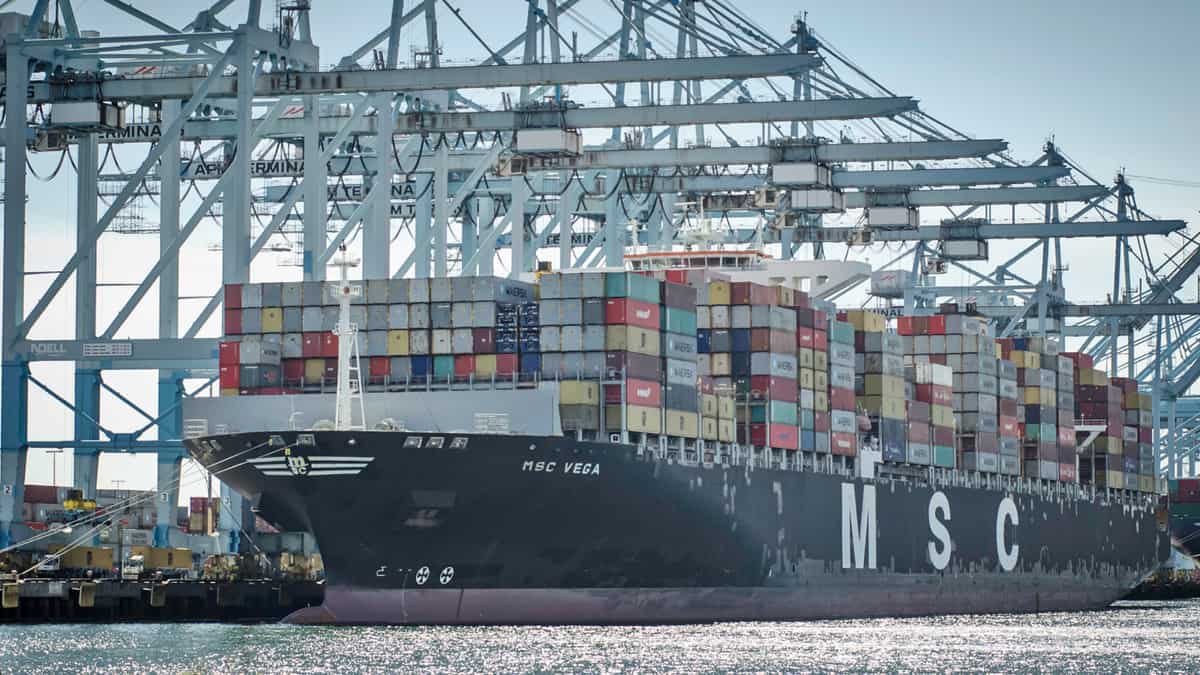The shipping research and consulting firm Drewry says supply is expected to continue to outstrip demand in the container shipping industry but that carriers are “battle-hardened to cope with yet another challenging and unpredictable year.”
“Much like last year, carriers should be able to return solid if unspectacular results and continue to prepare the ground for a better future,” Drewry predicted in an article in the current issue of Container Insight Weekly.
Ships delivered this year are expected to add 1.2 million twenty-foot equivalent units (TEUs) of capacity, with 569,000 TEUs of capacity on ultra large container vessels (ULCV), ships with capacity for more than 18,000 TEUs.
Drewry added that 23 of those ULCVs (with aggregate capacity of 532,000 TEUs) are being added by just three companies, each of which is a member of a different carrier vessel space-sharing agreement. They are Hyundai Merchant Marine, which will join THE Alliance in April; CMA CGM, which is a member of the Ocean Alliance; and Mediterranean Shipping Co., which is a member of the 2M Alliance.
“The current delivery schedules for the new ULCVs are spread evenly through 2020, which should make their integration a little easier than if they arrived en masse,” said Drewry. Should delivery of some of the new ships be delayed, as often happens, that could help temper overcapacity.
How severe is the overcapacity? Drewry has created a proprietary global supply-demand index for the container shipping industry, and it said anytime it is below 100 represents overcapacity. Its quarterly Container Forecaster report calls for a tiny decrease of 0.4 points to 90.6 in 2020, highlighting “just how far carriers have to go to compensate for the industry’s structural overcapacity and reach a comfortable balance that will promote sustainable freight rate gains.”
However, the London-based consultants said carriers have proven adept at controlling capacity by canceling selected weekly sailings. Drewry’s preliminary estimate is that there were 253 of these “void sailings” in 2019, up from 145 in 2018.
Drewry noted that capacity will also be reduced this year because about 260 containerships (with aggregate capacity of nearly 2.4 million TEUs) are scheduled to be fitted with exhaust scrubbers. A ship is taken out of service during the several weeks it takes for a shipyard to install a scrubber.
In 2020, it said lines “will remain price-takers” from shippers “as the supply-demand fundamentals will work against them, although they will be able to remain profitable so long as operating costs are kept in check. It will be a tightrope act and the capacity levers of idling and void sailings will be pulled frequently.
“Looking beyond 2020, carriers’ best hope to reverse this course is to be much more ruthless on demolitions and to remain restrained when it comes to ordering new tonnage. The biggest risk to the latter is a significant government influence within some Asia-based carriers that could force politically driven rather than commercially driven investment decisions.”
Drewry believes orders for new ships will be constrained by three major factors: current structural overcapacity; new carrier strategies that require more spending on IT and logistics; and uncertainty about future environmental regulations and compliant vessel fuels as carriers try to figure out how to best reach the goal of becoming carbon neutral.
The International Maritime Organization has set the goal of reducing the shipping industry’s greenhouse gas emissions by at least 50% compared to what they were in 2008 and at the same time pursuing efforts to phase them out entirely.











JetBlue Reservations
Nice post!